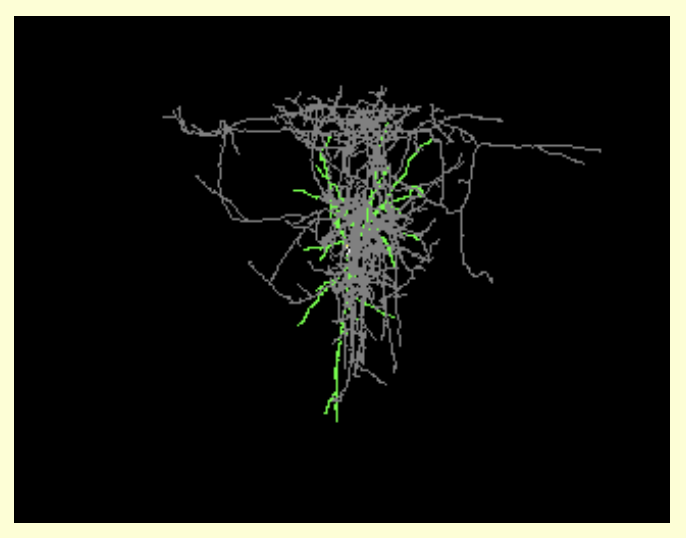URL: http://www.ncbi.nlm.nih.gov/structure
Proper Citation: NCBI Structure (RRID:SCR_004218)
Description: Database of three-dimensional structures of macromolecules that allows the user to retrieve structures for specific molecule types as well as structures for genes and proteins of interest. Three main databases comprise Structure-The Molecular Modeling Database; Conserved Domains and Protein Classification; and the BioSystems Database. Structure also links to the PubChem databases to connect biological activity data to the macromolecular structures. Users can locate structural templates for proteins and interactively view structures and sequence data to closely examine sequence-structure relationships. * Macromolecular structures: The three-dimensional structures of biomolecules provide a wealth of information on their biological function and evolutionary relationships. The Molecular Modeling Database (MMDB), as part of the Entrez system, facilitates access to structure data by connecting them with associated literature, protein and nucleic acid sequences, chemicals, biomolecular interactions, and more. It is possible, for example, to find 3D structures for homologs of a protein of interest by following the Related Structure link in an Entrez Protein sequence record. * Conserved domains and protein classification: Conserved domains are functional units within a protein that act as building blocks in molecular evolution and recombine in various arrangements to make proteins with different functions. The Conserved Domain Database (CDD) brings together several collections of multiple sequence alignments representing conserved domains, in addition to NCBI-curated domains that use 3D-structure information explicitly to define domain boundaries and provide insights into sequence/structure/function relationships. * Small molecules and their biological activity: The PubChem project provides information on the biological activities of small molecules and is a component of NIH''''s Molecular Libraries Roadmap Initiative. PubChem includes three databases: PCSubstance, PCBioAssay, and PCCompound. The PubChem data are linked to other data types (illustrated example) in the Entrez system, making it possible, for example, to retrieve information about a compound and then Link to its biological activity data, retrieve 3D protein structures bound to the compound and interactively view their active sites, and find biosystems that include the compound as a component. * Biological Systems: A biosystem, or biological system, is a group of molecules that interact directly or indirectly, where the grouping is relevant to the characterization of living matter. The NCBI BioSystems Database provides centralized access to biological pathways from several source databases and connects the biosystem records with associated literature, molecular, and chemical data throughout the Entrez system. BioSystem records list and categorize components (illustrated example), such as the genes, proteins, and small molecules involved in a biological system. The companion FLink icon FLink tool, in turn, allows you to input a list of proteins, genes, or small molecules and retrieve a ranked list of biosystems.
Abbreviations: NCBI Structure
Resource Type: data or information resource, database
Keywords: macromolecule, conserved domain, protein classification, protein, small molecule, biological activity, molecule, biosystem, biological system, structure, gene, alignment, biomolecule, interaction, function, evolution, 3d spatial image, visualization, gold standard
Expand Allis listed by |
|
is related to |
|
is related to |
|
is related to |
|
is related to |
|
is related to |
|
is related to |
|
is related to |
|
is related to |
|
is related to |
|
has parent organization |
We found {{ ctrl2.mentions.total_count }} mentions in open access literature.
We have not found any literature mentions for this resource.
We are searching literature mentions for this resource.
Most recent articles:
{{ mention._source.dc.creators[0].familyName }} {{ mention._source.dc.creators[0].initials }}, et al. ({{ mention._source.dc.publicationYear }}) {{ mention._source.dc.title }} {{ mention._source.dc.publishers[0].name }}, {{ mention._source.dc.publishers[0].volume }}({{ mention._source.dc.publishers[0].issue }}), {{ mention._source.dc.publishers[0].pagination }}. (PMID:{{ mention._id.replace('PMID:', '') }})
A list of researchers who have used the resource and an author search tool
Find mentions based on location

{{ ctrl2.mentions.errors.location }}
A list of researchers who have used the resource and an author search tool. This is available for resources that have literature mentions.
No rating or validation information has been found for NCBI Structure.
No alerts have been found for NCBI Structure.
Source: SciCrunch Registry





